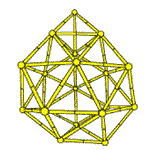Department of Chemistry
Date of this Version
July 2000
Abstract
A concept for molecular electronics exploiting carbon nanotubes as both molecular device elements and molecular wires for reading and writing information was developed. Each device element is based on a suspended, crossed nanotube geometry that leads to bistable, electrostatically switchable ON/OFF states. The device elements are naturally addressable in large arrays by the carbon nanotube molecular wires making up the devices. These reversible, bistable device elements could be used to construct nonvolatile random access memory and logic function tables at an integration level approaching 1012 elements per square centimeter and an element operation frequency in excess of 100 gigahertz. The viability of this concept is demonstrated by detailed calculations and by the experimental realization of a reversible, bistable nanotube-based bit.


Comments
Published in Science Vol. 289, no. 5476 (July 7, 2000), pp. 94–97; doi 10.1126/science.289.5476.94 Copyright © 2000 by the American Association for the Advancement of Science. Used by permission. http://www.sciencemag.org/cgi/content/full/289/5476/94